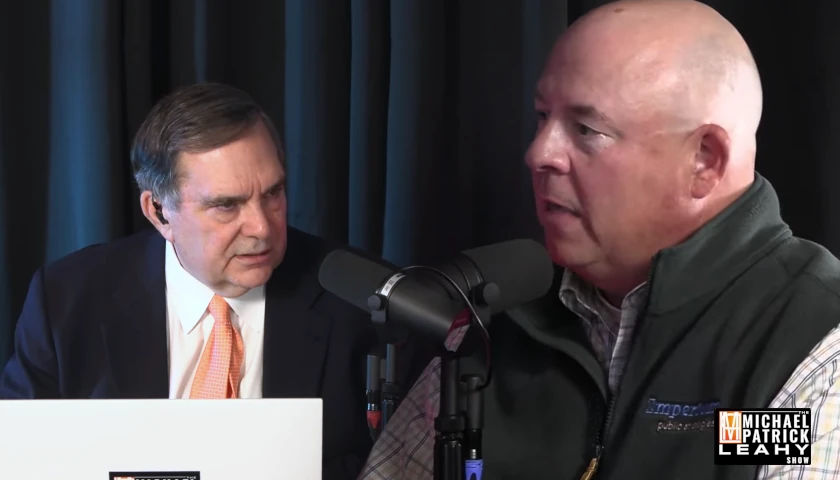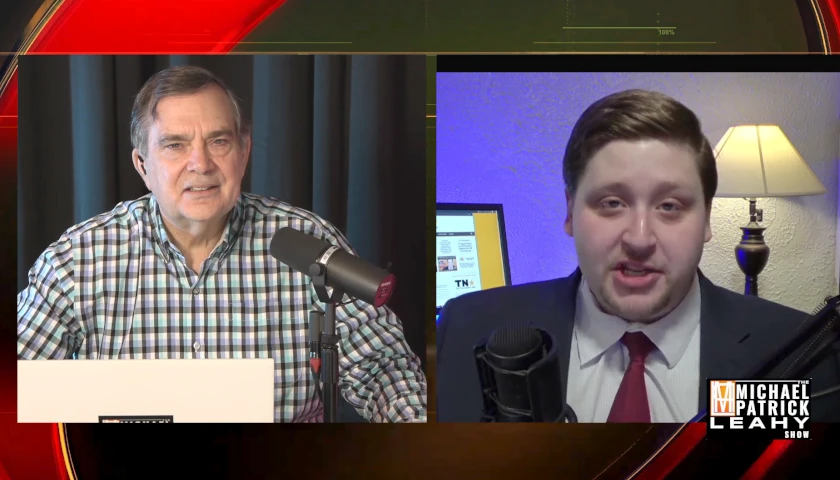Live from Music Row, Friday morning on The Tennessee Star Report with Michael Patrick Leahy – broadcast on Nashville’s Talk Radio 98.3 and 1510 WLAC weekdays from 5:00 a.m. to 8:00 a.m. – guest host Gulbransen welcomed the original all-star panelist Crom Carmichael to the studio for another edition of Crom’s Crommentary.
CROM CARMICHAEL:
I just finished doing three, two-hour seminars with some students at Belmont, a delightful group of students, and I tried to remember back what my frame of mind was when I was that age, which was 20. And attending three, two-hour seminars on economics, it’s highly unlikely that I would’ve done that.
So I congratulate the students who attended. But in the process of the seminar, I try to give some examples of innovation and, and the process of innovation, I went back and looked at some of our industries, and this is interesting. In 1790, 90 percent of all Americans were engaged in agriculture. 90 percent. And that’s because human beings pushed the wooden or the kind of almost makeshift plows.
And because it was humans pushing these rickety plows they couldn’t grow much. And if you can’t grow much food then you can’t grow extra food for other people. And if nobody can grow extra food for other people, then that means everybody has to grow food. And you can’t by the way, as a society, you can’t advance much if 90 percent of the work effort is doing one thing to meet an absolute necessity.
And then I kind of followed that along. And the next thing was that somebody came along with an invention of a heavier plow that was made of a stronger material that could be pulled behind an animal like a horse.
And that allowed the percentage of the population that was growing food to drop from 90 percent to 70 percent, which meant that there was 20 percent of the population was freed up to invent other things, discover other things, and to do other work that advanced society.
Now today, 2 percent of the total population grows enough food to feed all of America and to feed a lot of people around the world. Just 2 percent. And then I looked at communications. The first communication in our country, uh, of high-speed communication was the Pony Express.
So it took weeks to get a piece of mail across the country. And then the Pony Express was replaced by the telegraph. And in order for the telegraph to work you had particular spots in towns where you had one telegraph operator and then the telegraph operator would take the telegraph and then they would carry it out to whoever it was to be sent to.
And so the process was slow. Then we advanced in the telephone. And I wanna particularly talk about the cell phone industry because the very first renditions of anything that would be approaching a cell phone were in World War II when there were 130,000 walkie-talkies that existed.
The battery life was short and the range was very, very low. And so that was just all, it was. It was the first example of wireless communication between two devices. And then Bell Labs came out with the first car phone. And that was the first actual kind of cell phone.
It wasn’t the technology that we are on today, but it was car phones. The first car phone weighed 80 pounds, and it cost an enormous amount of money. And the only people who bought them were people who were in sales and in their cars a lot and could actually make use of the phones enough to pay the bills. Which, which were high. Then it developed along and you ended up with the first handheld phone which Motorola developed.
It was two and a half pounds. It cost $4,000 back then. And it would hold 30 contacts and it would do one thing. It would allow you to talk to somebody else. And now you have cell phones that are computers that will take pictures. They will do everything. Your cell phone now will do virtually everything that a computer will do and many, many other devices.
The point of the Crommentary today is that product development and innovation are what drive prosperity. And in our country, our constitution protects innovations and it required Congress to pass a law because it says that Congress shall, not may. Shall protect intellectual property. And the first intellectual property was protected by copyrights and works of ideas that were on paper or music.
And then it developed into the patent office to protect commercial and novel ideas and allow the people who own those patents to then exploit their novel idea for a period of 20 years. And so it’s very, very exciting to watch and if you go back and look at history, and you see that for literally thousands of years, up until around 1750, the world lived at a subsistence level where if you didn’t take care of getting your very basic needs of food, water, shelter, people starved to death.
And that was a regular thing. And it’s a great thing to be in a society that protects novel ideas and protects intellectual property. But it’s also nice to look back and see just how important and what those concepts and principles mean to the material advancement of society.
Listen to today’s show highlights, including this Crommentary:
– – –
Tune in weekdays from 5:00 – 8:00 a.m. to The Tennessee Star Report with Michael Patrick Leahy on Talk Radio 98.3 FM WLAC 1510. Listen online at iHeart Radio.
Photo “Farm” by Dietmar Reichle.




